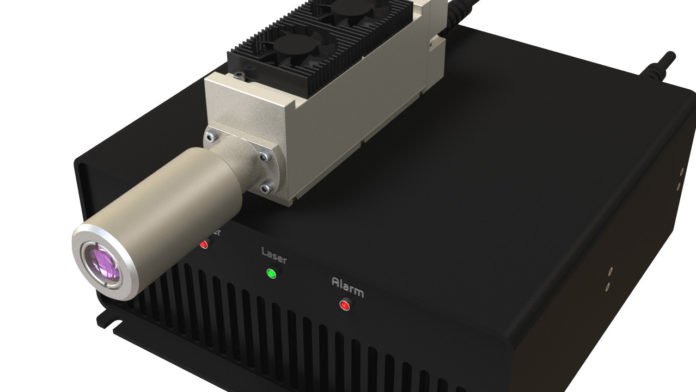Since laser modules are more affordable, they became quite popular among makers and hobbyists. Pretty decent laser for engraving can be found around 200$ and if you want to do laser cutting, then the price range will be 300-1000 USD for a single multimode diode laser head.
Most diode lasers work in CW mode and have 7-8-watt power output however in impulse mode a peak power can be reached at 10 watt which is quite good but then the average power will decrease and reach something like 2-3 watt.
In other terms, the user can run in CW with 7-8 watt or impulse with 10-watt peak but average is 2-3 watt.
What are therefore the limitations of diode lasers?
As soon as there is multimode, there is a high beam divergence which can reach as much as 90 degree.
Another thing is that you still get a small square, not a dot, since diode lasers have fast and slow axes.
Another limitation is a wavelength – most powerful diodes have 445 nm wavelength or 808 nm. So, there are no other powerful diodes on the market with more than 5-watt CW power.
That brings us to a very important question, what is an alternative for a diode laser.
The alternative
Well – the most popular is a Co2 tube and a Co2 laser. The thing is that you can not use a Co2 tube with your CNC router, XY plotter or a 3D Printer,
Co2 tube is very fragile, bulky, requires 10kV power supply and can be only used in a special enclosure.
Since the launch of Ruby, the first laser, the technology has been improved and led to new possibilities for DPSS laser modules.
DPSS laser modules
The technology of building a laser resonator requires deep knowledge and have a high precision equipment but in general basic principles are quite simple to understand.
So, what is so cool about DPSS laser modules?
First of all, they have pretty high average power. Well DPSS laser can reach 10 watt in Cw while impulse can be as much as 50-60 kW and fiber lasers can have average power of 30-50 watt and have peak power of 7-8 kW which it quite good for metal engraving and metal cutting.
They operate in non-visible spectrum mostly like 1064 /1080 nm which is not visible for human eye.
Right now, almost all laser like DPSS or fiber are used with galvo mirrors. That creates a high speed and accuracy of engraving but reduces a working size.
We think that DPSS lasers can be easily installed on any 3D printer, CNC router or XY plotter for metal marking and metal cutting.
For example, with a 10-watt DPSS laser you can easily cut up to 0.5 mm of steel, aluminum, brass and copper.
DPSS laser can be used in other applications like rust removal.
The reason is why DPSS lasers are cutting metal and engrave without any paste because of high energy pulses. That pulses carry a high energy that can interact with metallic atoms and molecules vaporizing them.
Some 6-8-watt diodes cannot even engrave on metals while having the same average power.
The nuance is in pulses. The resonator gathers energy for a certain period of time before releasing it. That make DPSS lasers operate in impulse mode. However, the frequency of that pulse can reach 20-30 kHz that is why sometime they are called quasi-CW.
Another positive feature of a DPSS laser that usually the beam quality is much better and can be focused in a really tiny spot such as 40-60 microns. What makes engraving spot is so tiny and accurate
In general, DPSS laser modules are very much underestimated in terms of practical applications on 3D printers / CNC machines and XY plotters, yet their applications have proved their efficiency.
Image: Credit: Endurance Lasers – laser part DPSS. Remember, you can post free of charge job opportunities in the AM Industry on 3D ADEPT Media or look for a job via our job board. Make sure to follow us on our social networks and subscribe to our weekly newsletter : Facebook, Twitter, LinkedIn & Instagram ! If you want to be featured in the next issue of our digital magazine or if you hear a story that needs to be heard, make sure to send it to contact@3dadept.com.






